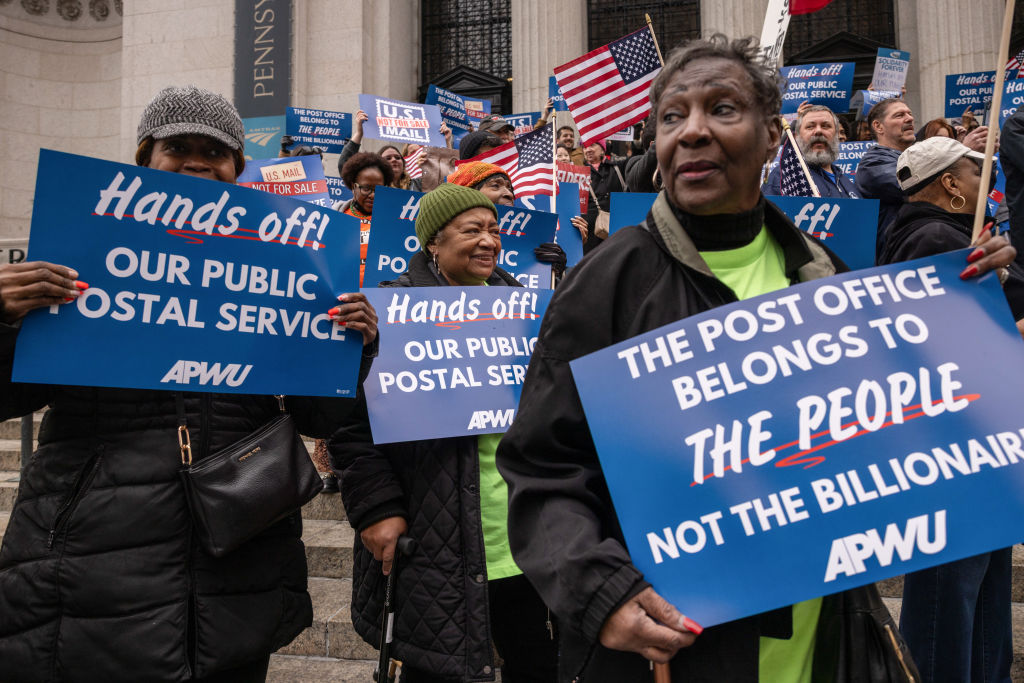Driven by Donald Trump’s billionaire cabinet and the Department of Government Efficiency’s (DOGE) anti-government campaign, privatizers are actively seeking opportunities. The first month of Trump 2.0 has seen significant profiteering and self-dealing by the wealthy elite. The administration has signaled to profiteers that now is the time to act.
For years, the Right has been eager to privatize the United States Postal Service (USPS). Now, efforts are underway to make this a reality. In December, Trump suggested placing USPS under the Department of Commerce. Recently, Louis DeJoy, the Trump-appointed postmaster general, agreed to collaborate with DOGE to initiate the process.
Major financial institutions like Wells Fargo are enthusiastic about the prospect. Last month, Wells Fargo released a memo detailing political strategies for postal privatization and potential profit opportunities. Their plan involves selling off the most profitable segments, raising prices, and reducing the unionized workforce. This scheme threatens the foundations of this popular universal public service.
Wells Fargo envisions a postal service where mail remains a taxpayer-funded government entity, while package and parcel components, which are more profitable, are “sold or IPOed.” To ensure decent profits, “USPS would need to raise prices by ~30-140% across its product line.”
A privatized postal system would also challenge the Universal Service Obligation, which requires mail delivery to every address six days a week. This move could pressure the proposed mail-only service to reduce delivery frequency.
DOGE’s impact on federal workers has inspired Wells Fargo. It recommends offering postal employees a “deferred buyout” or considering layoffs. Following the UK’s Royal Mail privatization in 2013, it suggests the government assume all pension liabilities without offering them to workers at the new private company.
The memo candidly admits that privatization will result in “less job security amid inevitable loss of union protections, loss of pension benefits, higher healthcare costs and employee/wage restructuring.”
With post offices in every zip code, Wells Fargo also sees real estate as a major source of profit. The company estimates the real estate value for the USPS to be as much as $88 billion, including smaller facilities they aim to sell or lease.
Despite public support for USPS, the memo suggests a backdoor strategy through a budget reconciliation bill. It also raises the possibility of Trump replacing the Postal Board of Governors with individuals implementing policies akin to privatization, such as rate increases.
Wells Fargo acknowledges that major postal unions are the primary opposition to privatization. Referencing the Great Postal Strike of 1970, the memo’s authors fear the economic damage from a joint strike.
There are current indications among rank-and-file members linking postal worker militancy to a broader fight against privatization. As Labor Notes reports, a new caucus in the National Association of Letter Carriers (NALC) led a movement rejecting the latest tentative agreement from USPS (offering only a 1.3% annual raise).
Wells Fargo is correct that privatization will face resistance. The USPS enjoys majority public support, providing stable unionized employment, especially for African Americans and veterans.
Instead of privatization, the postal service could expand to include services like postal banking, copying documents, wrapping holiday presents, and more.
If the Wells Fargo memo is any indication, they recognize the power to stop them exists.
— news from Jacobin magazine
